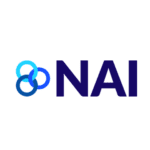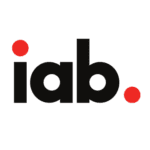What is a Look-Alike-Audience?
A look-alike audience is a group of individuals who share similar characteristics, behaviors, and interests to a predefined source audience. These source audiences typically consist of existing customers, website visitors, or engaged social media followers.
In the realm of modern marketing, businesses face the ongoing challenge of reaching and engaging their target audience effectively. Traditional methods of targeting may not always yield the desired results, leaving marketers seeking innovative ways to enhance their campaigns. Marketing in today’s age is less about creativity about some ways, and more about the statistics involved.
Enter “Look-Alike Audiences,” a powerful marketing tool that has proven to be a game-changer for businesses aiming to expand their reach and maximize their success. In this blog, we will delve into the concept of Look-Alike Audiences, explore how they work, and uncover the significant benefits they bring to the table.
Understanding Look-Alike Audiences
By analyzing the data of the source audience, platforms like Facebook, Google, and other advertising networks can identify patterns and similarities among the members. they then use this information to create a new audience segment, the look-alike audience, comprising users who closely resemble the source audience.
The look-alike audience creation process employs sophisticated algorithms and machine learning techniques, making it a valuable and efficient marketing tool. Look-alike audiences present a prime opportunity for businesses to expand their reach beyond their current customer base, as these audiences are likely to be interested in the brand’s products or services.
How to Create Effective Look-Alike Audiences
Look-alike audiences are a valuable asset in the modern marketer’s toolkit, enabling businesses to tap into untapped market segments and expand their customer base.
Step One: Define the Source Audience
Start by selecting a well-defined and engaged source audience. This could be your current customers, a segment of your email list, or visitors who have taken specific actions on your website.
Step Two: Choose the Right Platform
Various advertising platforms offer look-alike audience capabilities. Research and choose the platform that aligns best with your business goals and target audience.
Step Three: Set Appropriate Parameters
When creating a Look-Alike Audience, you can adjust the size and similarity percentage. Larger audiences might reach more people, but they could be less precise. Finding the right balance is essential.
Step Four: Monitor and Optimize
Regularly analyze the performance of your Look-Alike Audience campaigns. Make data-driven adjustments to continually improve their effectiveness.
The Benefits of Look-Alike Audiences:
The question remains – “why create look-alike audiences?”
Enhanced Audience Targeting
Look-alike audiences allow marketers to extend their targeting efforts beyond their initial reach. By leveraging data from their most valuable customers, businesses can find new prospects who are highly likely to engage with their offerings.
Increased Conversion Rates
Since look-alike audiences are constructed based on the traits of existing engaged customers, the likelihood of converting them into new customers is significantly higher. This can lead to improved ROI on marketing efforts and campaigns.
Efficient Ad Spend
By targeting a look-alike audience, businesses can optimize their ad spend. Instead of targeting broad and generic segments, marketers can focus on a more refined audience with a higher probability of responding positively to their ads.
Rapid Market Penetration
For startups or businesses entering new markets, Look-Alike Audiences provide a shortcut to gaining traction. By finding audiences like their existing successful customer base, they can quickly build a presence and grow in a new location or demographic without the waste of throwing estimations into their marketing mix.
Deeper Customer Insights
Analyzing the traits of a Look-Alike Audience can provide valuable insights into customer behavior and preferences. This information can then be used to refine marketing strategies and further enhance engagement.
By leveraging data-driven insights, marketers can precisely target audiences that mirror their most engaged customers, resulting in increased conversion rates and more efficient ad spend. As businesses continue to embrace data-centric strategies, Look-Alike Audiences will undoubtedly play an integral role in their pursuit of marketing success.




